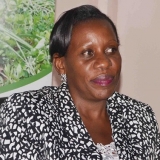Abstract
Understanding spatio-temporal land use land cover change is vital in responding to the dynamic and complex global environmental change that is having diverse effects on integrity of most landscapes. A study was conducted in the Budongo - Bugoma landscape to assess spatio-temporal patterns of land use land cover change using supervised image classification of Landsat imagery for 1990, 2000, 2010, 2020 and a prediction of LULC situation in 2040 done in Dinamica-EGO modelling platform. Between 1990–2020, there was a declining trend for grassland, bushland, and tropical high forest by −19.5%, −4.7%, and −2.7% respectively while subsistence farmland, commercial farmland, built-up areas experienced an overall rate of change of 19.0%, 5.0%, 3.5% respectively. This led to intensified landscape fragmentation and increased landscape homogeneity to mostly farmlands. The declining LULC classes were majorly converting to the increasing LULC classes with conversion hotspot areas detected in privately-owned lands occurring mainly in rural areas, sugarcane growing areas, refugee settlement areas, and oil/gas project sites. In 2040, it is predicted that approximately 50% of the landscape will be covered by human managed LULC classes including subsistence farmland, commercial farmland, and built-up area compared to approximately 40% in 2020. Agricultural activities and increased population density were the most significant drivers of the established land use land cover changes. This study has shown accelerated loss of key land cover biomes; grasslands, bushlands, and tropical high forests mediated by anthropogenic factors and leading to reduced landscape heterogeneity thus potential to significantly affect ecosystem services supply in this region. Promotion of agroecology, non-consumptive projects, and participatory land use planning are recommended to secure sustainable land use management. Establishment of the implication of LULCC on ecosystem services potential and ultimately human well-being is also recommended.
Anthropogenic induced land use/cover change dynamics of Budongo-Bugoma landscape in the Albertine region, Uganda
EfD Authors
Country
Sustainable Development Goals
Publication reference
Kusiima, S. K., Egeru, A., Namaalwa, J., Byakagaba, P., Mfitumukiza, D., & Mukwaya, P. (2022). Anthropogenic induced land use/cover change dynamics of Budongo-Bugoma landscape in the Albertine region, Uganda. The Egyptian Journal of Remote Sensing and Space Science, 25(3), 639–649. https://doi.org/10.1016/j.ejrs.2022.05.001

